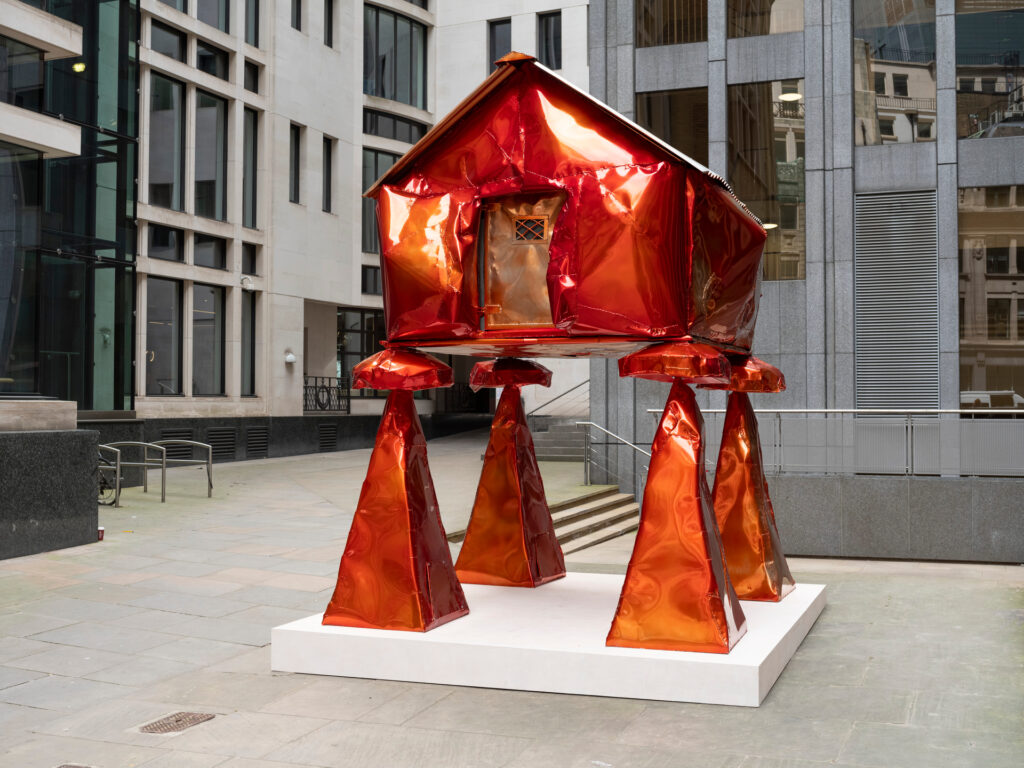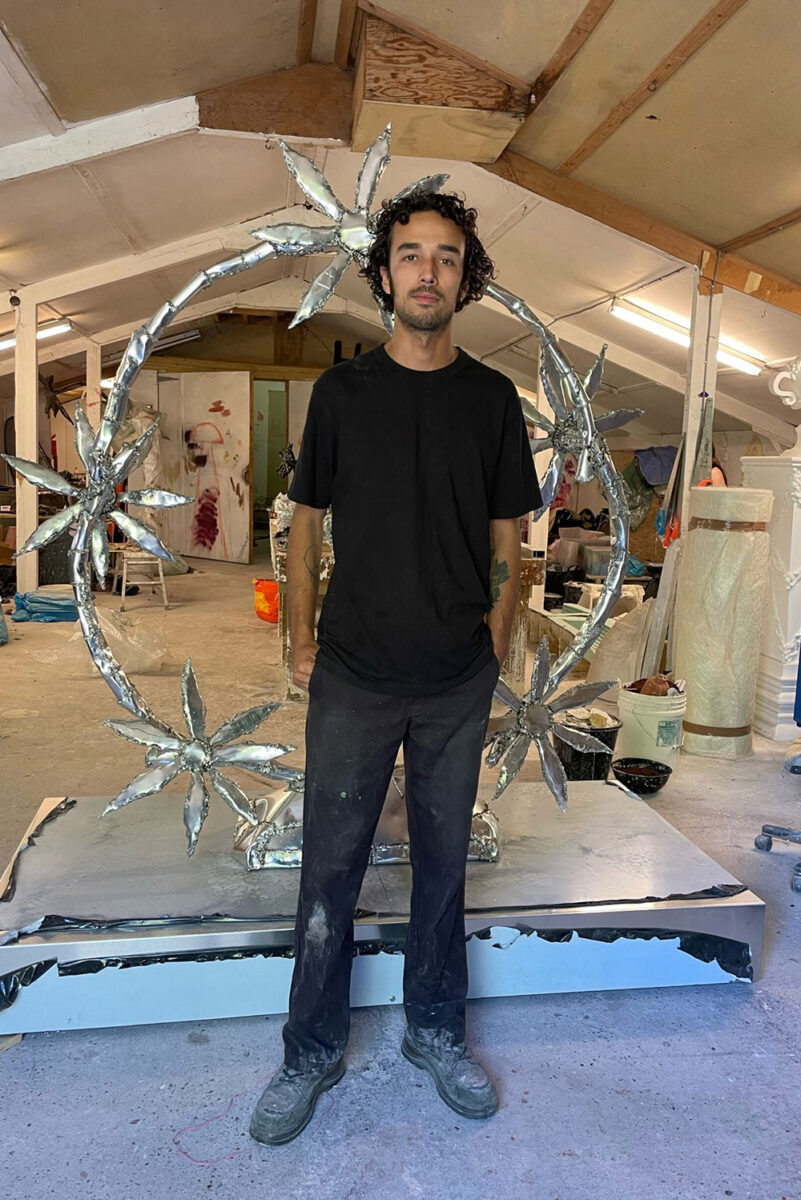Jesse Pollock
Jesse Pollock’s sculptural forms meditate on the contradictions and problematics inherent in the conceptualization of the British countryside as a bucolic, pastoral ideal. Using steel, aluminium and silicone he creates apple picking ladders, gigantic grain stores and menacing skulls, recurring motifs which he extracts from the soil of England’s pastures green. Dystopian in tone, his work offers a poignant commentary on the social and political conditions of England’s provincial communities and landscapes, offering an explanation for political events like Brexit through exploring individuals’ desires to return to a vision of Albion that never was.
His large-scale public sculpture, The Granary (2021) is on view in London’s financial district as part of ‘Sculpture in the City’, and he has presented a solo show with Steve Turner LA and duo exhibitions with George Rouy at Hannah Barry Gallery in London and the Material Art Fair in Mexico City. He has been featured by a number of noteworthy London galleries such as GROVE, Bold Tendencies with Hannah Barry Gallery and Brooke Bennington.
1)In what ways does your practice look to the future?
My practice paints a dark and dystopian view of the future. In some ways, my sculptures are like warnings of an impending crisis that we cannot quite comprehend or mitigate for.
Overarchingly, I intend my work to exist in the now, speaking to current events and societal or political conditions. However, in doing so, the pieces also contain elements informed by the contemporary happenings which will come to shape the future.
2)How might your work be considered a reflection of our times?
My work is very much born from my day to day life experiences; I search for contradictions, or sticking points in the interstice between events. The ideas that I uncover often provoke more questions than they answer, loaded with humour and attempts to lay bare the reality of any given situation.
Ideas around ethics are also important to me, with my pieces often aiming to reflect the ways in which individuals pick and choose between right and wrong. Humans see themselves as forces of intellectual prowess as well as the ultimate decision makers, controlling, creating and destroying the world they inhabit.
In terms of my process, there is certainly a sense of immediacy – my pieces exist in conversation with my bodily movement. I often use advanced technologies, products of the now, such as a welder and a plasma cutter. The haptic engagement between myself, the tools and the materials is really enjoyable to me; I deliberately exhaust myself in service of the work.
3)How does your practice speak to the past?
I began making sculptures after discovering the practice of American artist Peter Voulkos while I was a student at Camberwell. His work changed everything for me. After I graduated, I no longer had access to a kiln and found that using a welder in a shed was more efficient and affordable. I really fell in love with welding, in particular the instantaneous nature of it. I can make something on a large scale quite quickly, and I am able to work alone handling every detail of the process myself.
In terms of the themes I am interested in, ideas of nostalgia really inform my work. I don’t engage with one particular historical moment and instead explore evergreen notions of Old Britannia and arcadian or pastoral associations with the British countryside. To me, Britain is infected with nostalgia, like a swollen wound leaking with hypocrisy and ignorance, which has led to things like Brexit. The British countryside is so often romanticised, yet it is also somewhat grotesque – the land is ruggedly cut up and farming methods are incredibly brutal at times.
Ultimately, the allusions to the countryside within my work are intended as metaphors for human existence and the world we have created – the way in which we don’t know what we want, but we know we want it now. The way in which we are ultimately scrambling for survival in the face of certain mortality. The desire for acceptance and an answer to the question, do we know we’re alive?

